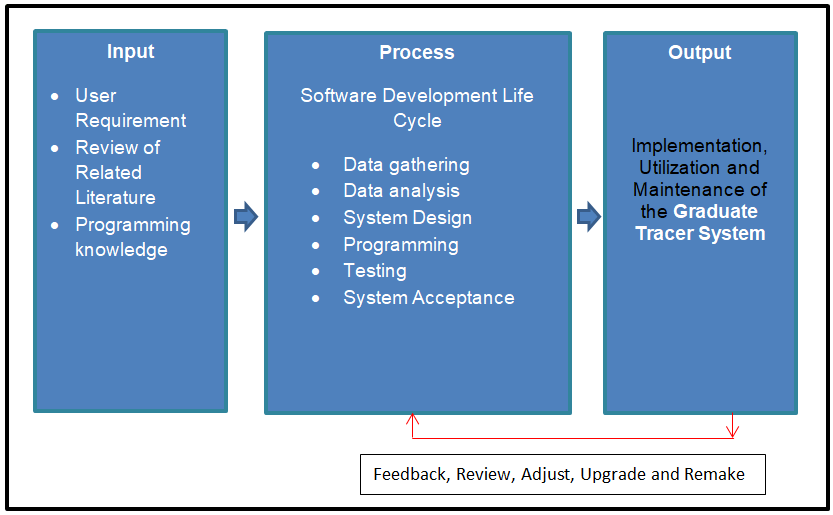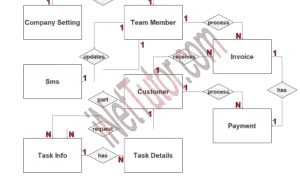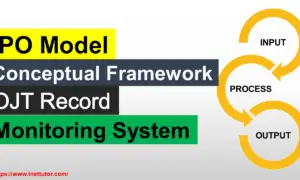Graduate Tracer System Conceptual Framework
This post will demonstrate how to develop a conceptual framework for a capstone project called Graduate Tracer System. The study’s conceptual framework was built using the input, process, and output (IPO) model.
About the Project
Table of Contents
A graduate tracer system is a tool that tracks and monitors the progress and movements of graduates of a particular educational institution, such as a university or college, after they have completed their studies. It is often used to gather data on the employment status and career paths of graduates, as well as to track their movements within the labor market. Some graduate tracer systems may also gather information on the satisfaction and well-being of graduates, as well as their continuing education and professional development. The data collected through a graduate tracer system can be used by the educational institution to improve the quality of its programs, to better understand the needs of its graduates, and to assist with career planning and job placement services for current and future students.
The system can be used to track the alumni’s whereabouts so that the school can keep in touch with them and know how they are doing. The system can also be used by employers to find potential employees who have graduated from the school. The system is beneficial to the alumni because it gives them a way to stay connected with their alma mater and to know what is happening there. It is also beneficial to the school because it helps keep track of alumni and makes it easier for them to find new students.
Conceptual Framework Diagram

The image above depicts the project’s conceptual framework, entitled Graduate Tracer System. It is based on the input, process, and output (IPO) model.
What is a Conceptual Framework?
A conceptual framework is a model or organizational structure used to define and comprehend a certain notion or experience. When doing research, a conceptual framework is frequently used to direct the formulation of the research question, hypotheses, and techniques as well as to aid in the interpretation and analysis of the study’s findings.
A conceptual framework could be used in a study on a graduate tracer system to give the study a theoretical foundation, make the major ideas and connections being looked at clearer, and direct the creation of the research design and techniques. To describe the variables being assessed, the population being examined, and the research methodologies being employed, as an illustration, a conceptual framework might be used. It could also be used to help evaluate the study’s results and pinpoint areas that need more study.
Using a conceptual framework in a research project on a graduate tracer system can be helpful because it helps to provide a clear and logical structure for the study, which can make the research more focused and coherent. It can also help to ensure that the research is grounded in existing knowledge and theory, which can make the findings more relevant and meaningful. Finally, a conceptual framework can help to guide the interpretation and analysis of the research findings, which can help to increase the reliability and validity of the study.
Input
User Requirement – This is the section where the researchers have gathered data on the system’s special features. It’s critical to think about their ideas because they’ll be the ones using the Graduate Tracer System.
Review of Related Literature – The researchers have undertaken investigations and research in the area of the proposed system. The researchers will benefit from this procedure as they create the project or system.
This is where the researchers can now use their knowledge in programming to design and develop the system.
Process
This is the part where the researchers will select and choose the best software development life cycle model for the project.
Data gathering
During this phase, the study’s researcher gathered all conceivable needs for the system’s development, including those obtained from the system’s beneficiaries, the end users. The survey questionnaire was created by the researcher and was validated by specialists. The surveys were used to collect information in order to improve the performance of the proposed system for future community use.
Data analysis
Consultation is used to acquire requirements from the end-user, and ideas are made. We also conducted a survey questionnaire, which the three experts approved (IT Expert, English Grammarian, and Researcher). And these questionnaires served as our data collection instrument for assessing the performance of the manual system, which served as the foundation for developing our proposed system.
System Design
The prototype and the proposed features of the system are created in this phase. Also the concrete understanding of how the system will operate is developed. In here, we identify all the necessary system inputs and outputs, design of data, processes and interfaces.
Programming
In this stage, we materialized the whole idea of the software to be designed. We created the program for the proposed system. The actual coding of the software is based on the system design and the requirements needs to be met. This is where the proper execution of the previous stages ensures a smooth implementation.
Program testing
In this phase, the researcher performed series of testing to check for any possible problems may arise during implementation and operation of the software and if the specification has been met.
System acceptance
This is the final stage, where the system is being installed and to be maintained after actual implementation. One must take into consideration are the hardware and the software requirements for the proper installation of the system. As part of the acceptance of this phase, the client is required to have a user training to enable them to familiarize fully the whole system.
Output
The project comes to life and is carried out in the real world once all of the necessary procedures have been accomplished. A fresh initiative has emerged, which will be cultivated to ensure the project’s long-term viability. The Graduate Tracer System will be installed, used, and maintained at this time.

Summary
The input, process, and output (IPO) model will be used to develop the conceptual framework for the investigation. The researchers determine the project’s user needs and assess relevant literature for the study before utilizing their programming skills to develop the project. To complete the system, the researchers will employ the Software Development Life Cycle (SDLC) technique. Its purpose is to ensure that the project goes through several stages to ensure that it has full functioning that meets the expectations of the consumers. The Graduate Tracer System will be implemented, used, and maintained as a result of this project.
Readers are also interested in:
Graduate Tracer Study Application Review of Related Literature
Online Year Book Management Database Project
Top 94 Capstone Project Ideas with Related Literature
You may visit our Facebook page for more information, inquiries, and comments. Please subscribe also to our YouTube Channel to receive free capstone projects resources and computer programming tutorials.
Hire our team to do the project.


